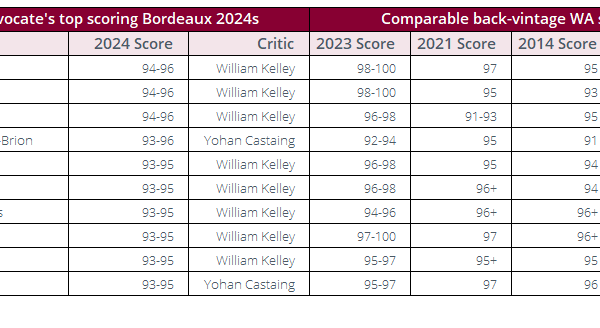We’re now into the fourth day of the Bordeaux 2010 tastings. As we will probably have to wait until next week for the critics’ enthusiasm/reservations to translate into ratings, here are our own thoughts on this year’s primeurs.
The wines
- 2010 is not a uniform vintage. As ever, those properties with the resources to deal with the challenges of the vintage have outshone those without them. That said, there is quality to be found at all levels.
- Left Bank: In general, the Left Bank is solid across the board. Big tannins, alcohol and acidity make for hugely powerful wines. (When will they be ready to drink?) Where they are in balance, they are profound and boast incredible structure and precision. Yet they are also fresh, even elegant.
- Pauillac is especially strong. With quality aspiring to new heights in 2010, the second wines really shine. It is interesting to note the emphasis that the chateaux are placing on reinforcing the independent identities of these wines. Any notion of second wines being cast-offs is given short shrift.
- Right Bank: A fair number of producers in St Emilion appear to have got it wrong this year – particularly those who picked late, leaving very harsh “woody” tannins and wines that lack balance. Cheval Blanc, however, was stunning, as was second wine Petit Cheval.
- In Pomerol, the Mouiex stable is very impressive at all levels – especially La Fleur Petrus, Trotanoy and the reserved, brooding Petrus.
- Graves: The display from the Clarence Dillon stable is magnificent. Other standouts include Haut Bailly, Domaine Chevalier, Smith Haut Lafitte and Pape Clement. Solid dry whites here as well.
- Vintage comparison: There is not much vintage comparison this year. Acidities, concentrations, alcohol levels and tannins are all at such record levels that there is no obvious benchmark for the wines. Nonetheless, vintage quality sits comfortably alongside 2009, but with a very different feel – a more classic “UK” vintage than the opulent, fruit-driven 2009 that precedes it.
The yields
- For the most part, yields are similar to 2009. Montrose has another 20 hectares (having purchased a parcel from Phelan Segur) and produced yields of 45 hectolitres/hectare. Calon Segur produced a very small crop. Otherwise there is “enough” wine.
- Although many properties have admitted that they want to produce “proper” quantities of wine and are less focused on green harvesting, the focus is also on lower yields – to extract maximum power.
- The Merlots suffered (in terms of yields) in 2010 due to millerandage and coulure.
The tasters
- Japanese customers from the larger houses are among the throngs of tasters. They have a pre-agreed budget and will buy the 2010s.
- China is well represented.
- There is at least one party from India (KBR School of Wine), suggesting a genuine if nascent broadening of interest elsewhere.
- The US trade seem to think they will buy a limited selection of chateaux. Customers’ interest in the Right Bank is no longer what it once was – the ‘fashion’ of old has been replaced by the idea of ‘brands’.
- Something for the UGC to consider: More and more people are attending the tastings, but are they actually buyers/distributors/critics? There seem to be more clients of clients and friends of friends in attendance. A worry as Petrus allowed just 500 people to taste its wares this year.
The market
- The wines will almost certainly sell. Chateaux will be content to hold back stock (they are seeing continuous demand for physical vintages); the negociants will take all they can for fear of losing allocations to others (including a new breed of dynamic, smaller, Asian-expert negociants clambering for allocations); and there will be strong demand from Europe and Asia.
- The Right Banks will likely struggle – as has been the theme of the last five years.
The prices
- Many anticipate similar release prices to those seen in 2009. The Right Bank may not sell at this level, so there is pressure to reduce prices. For the top brands on the Left Bank, however, prices may well be higher than last year’s (think Lynch Bages, Beychevelle, Duhart Milon and the second wines). There is, of course, another key factor at play. As one merchant put it, “As always, Robert Parker will decide the campaign.”




